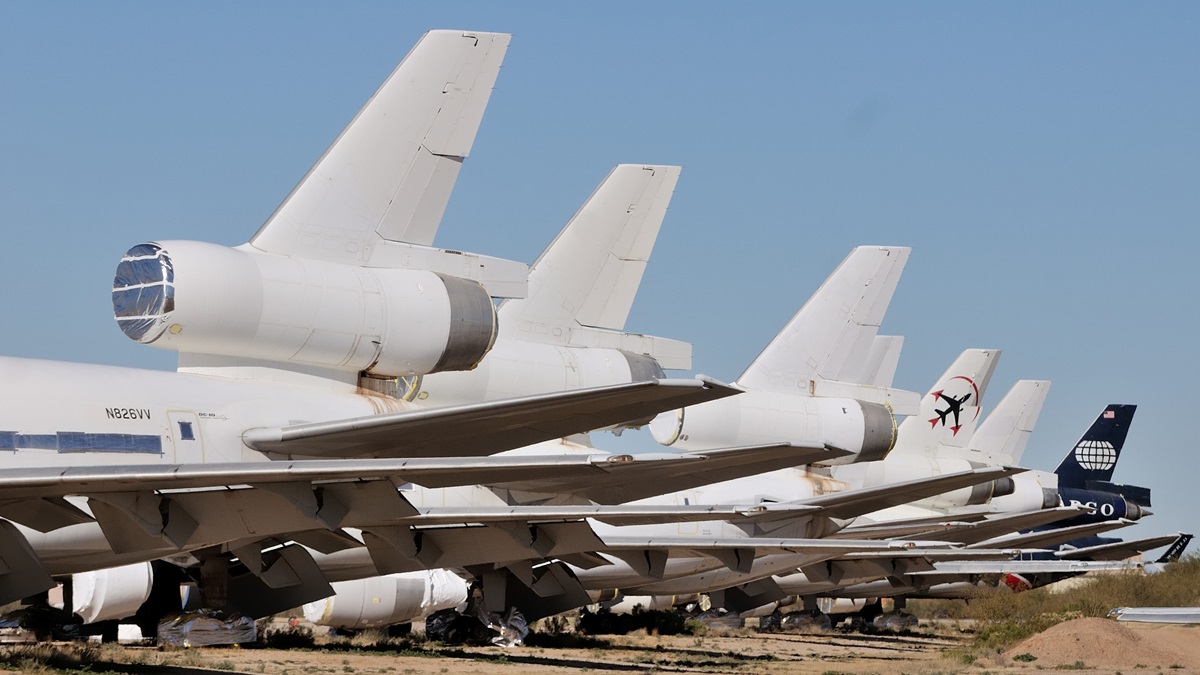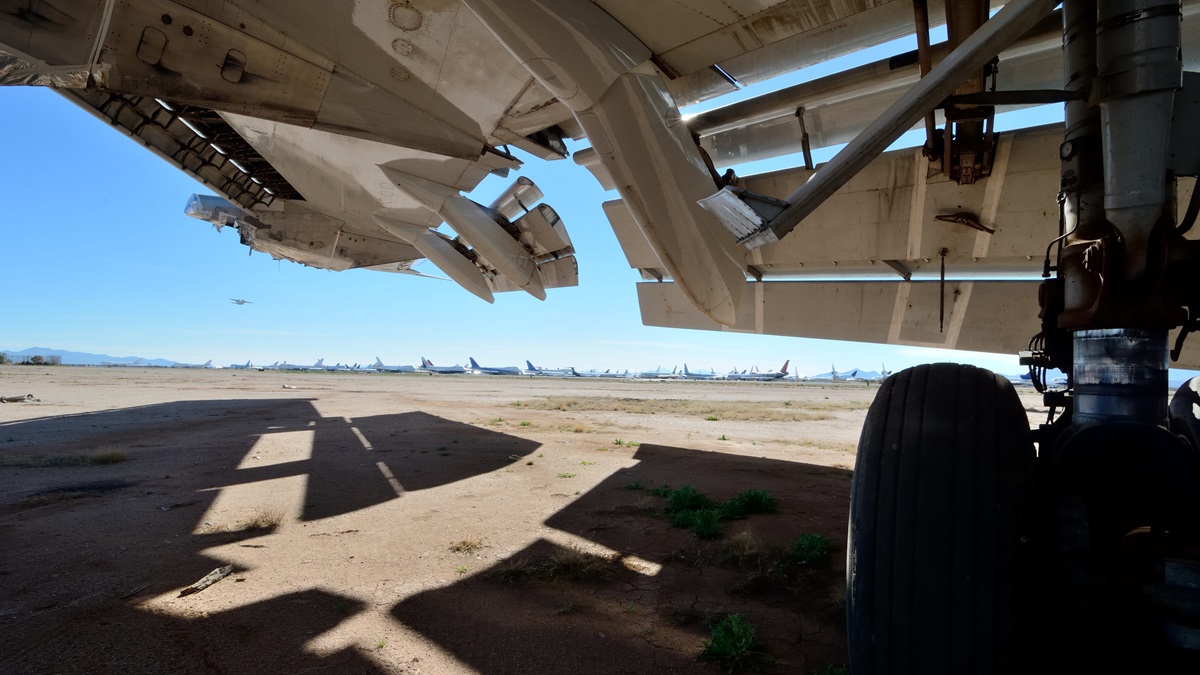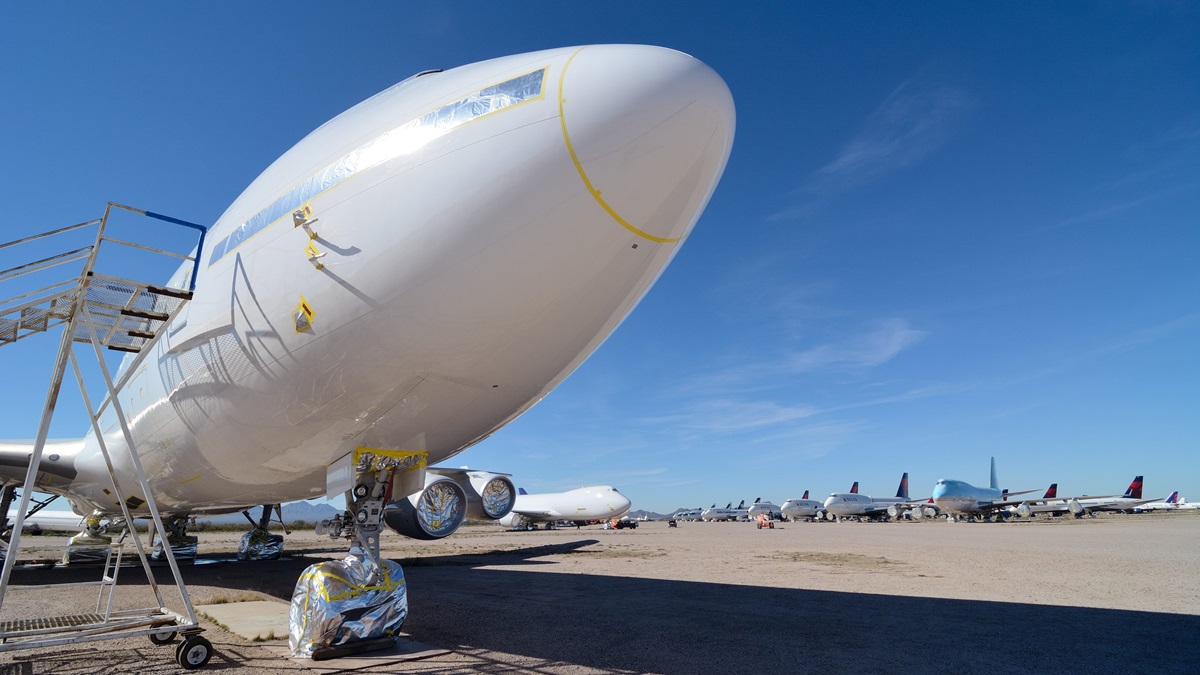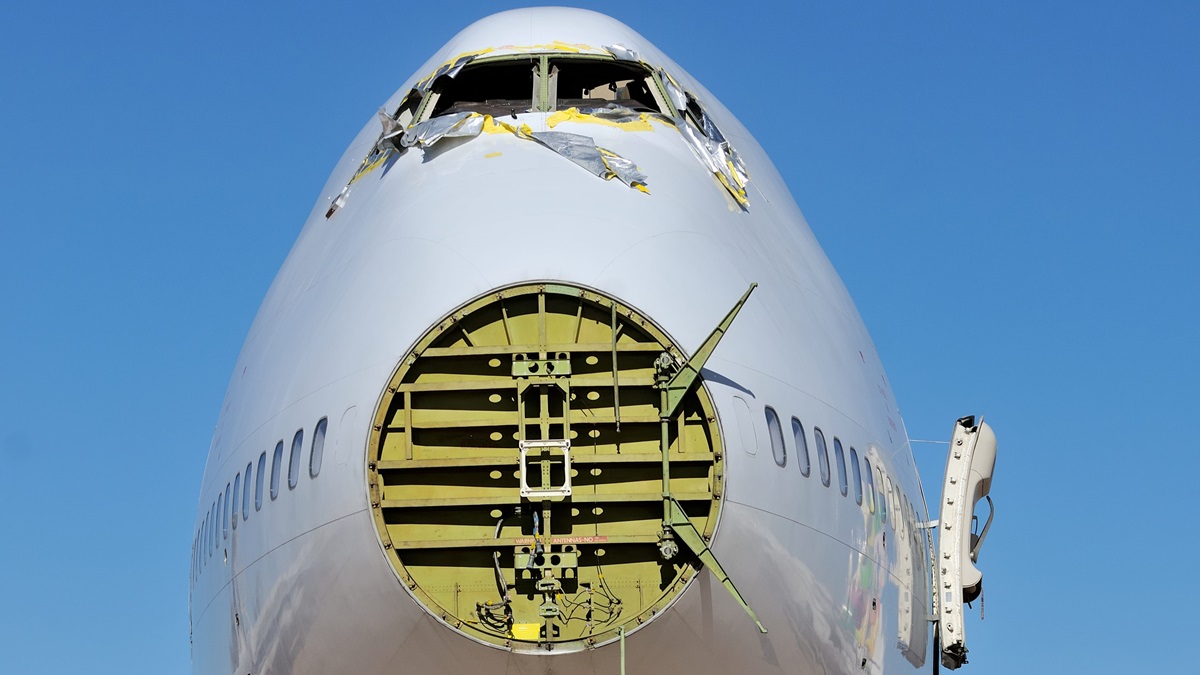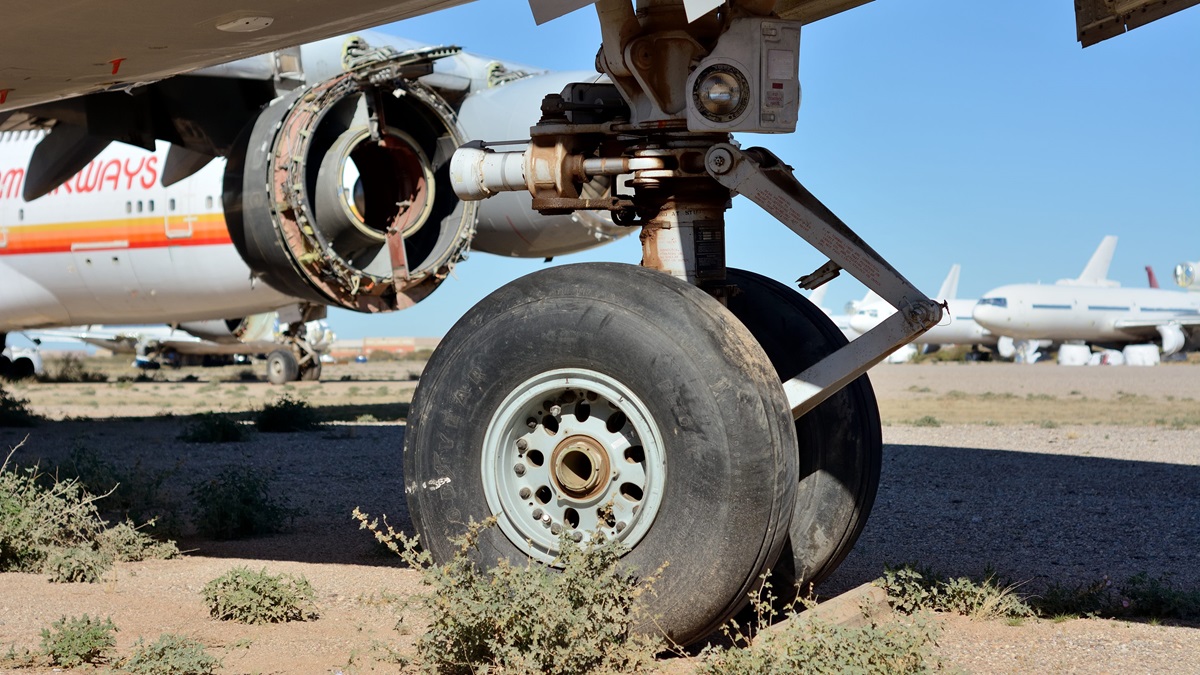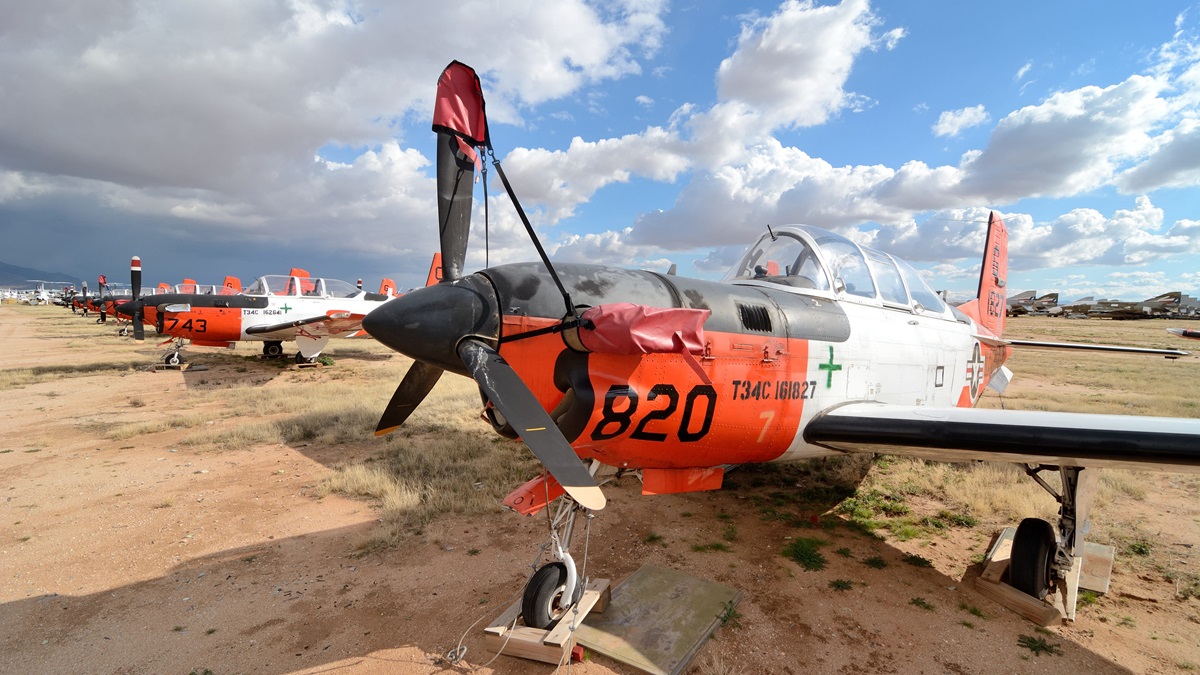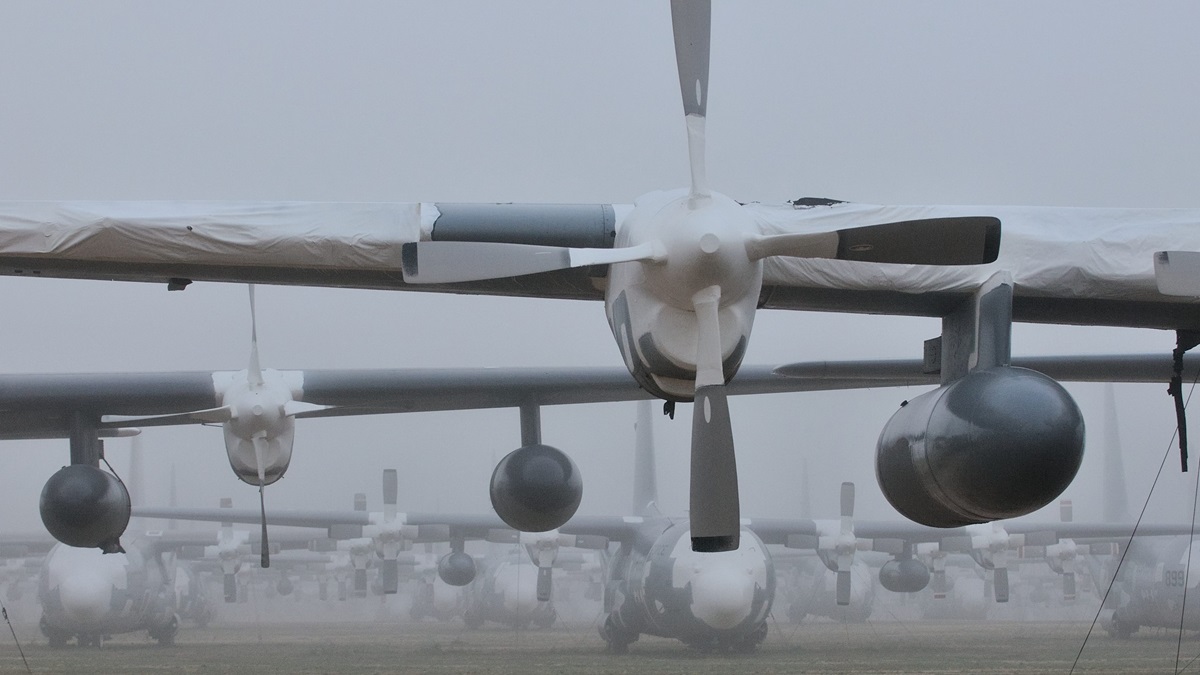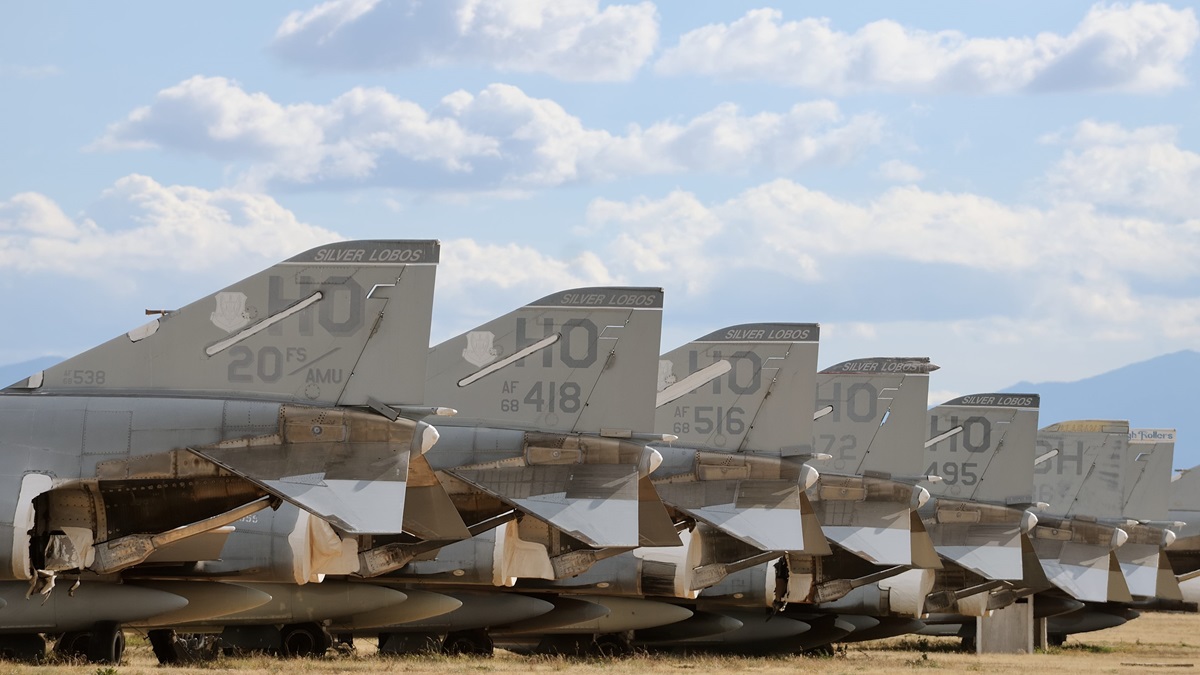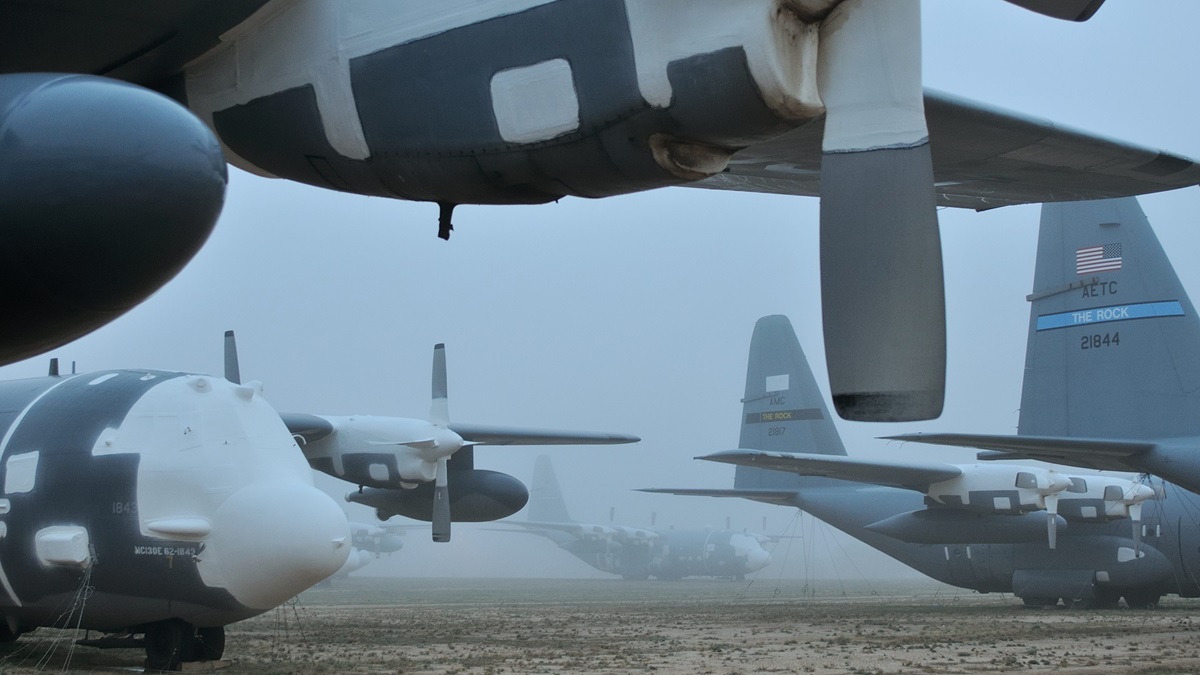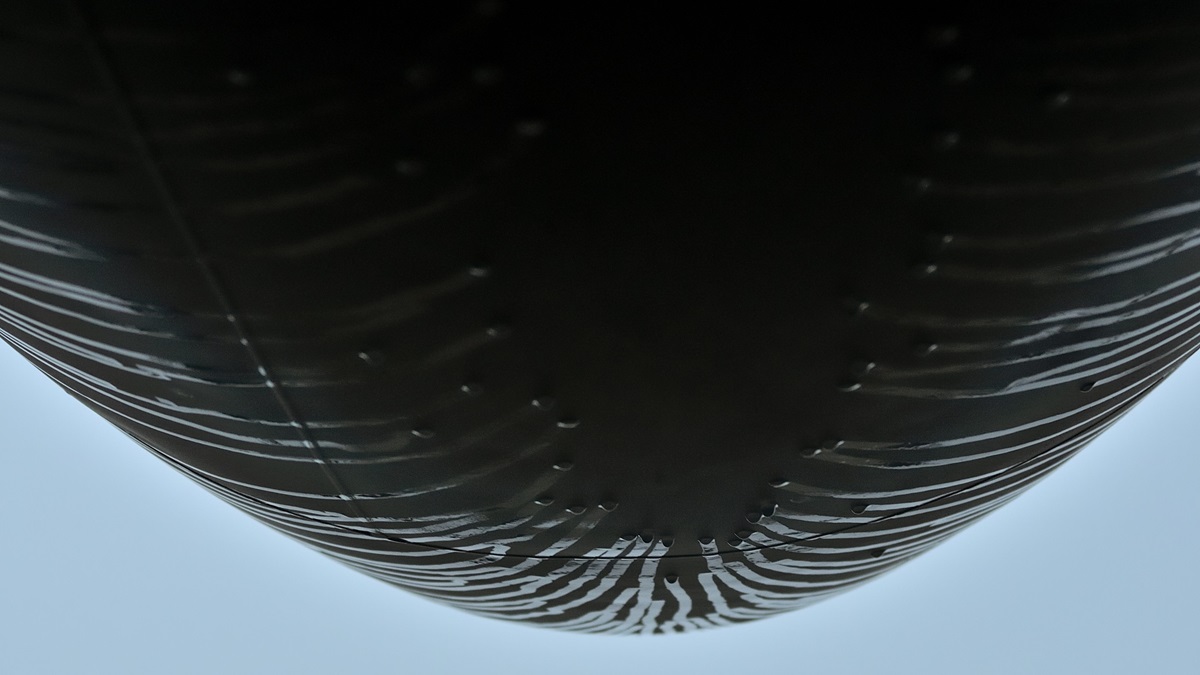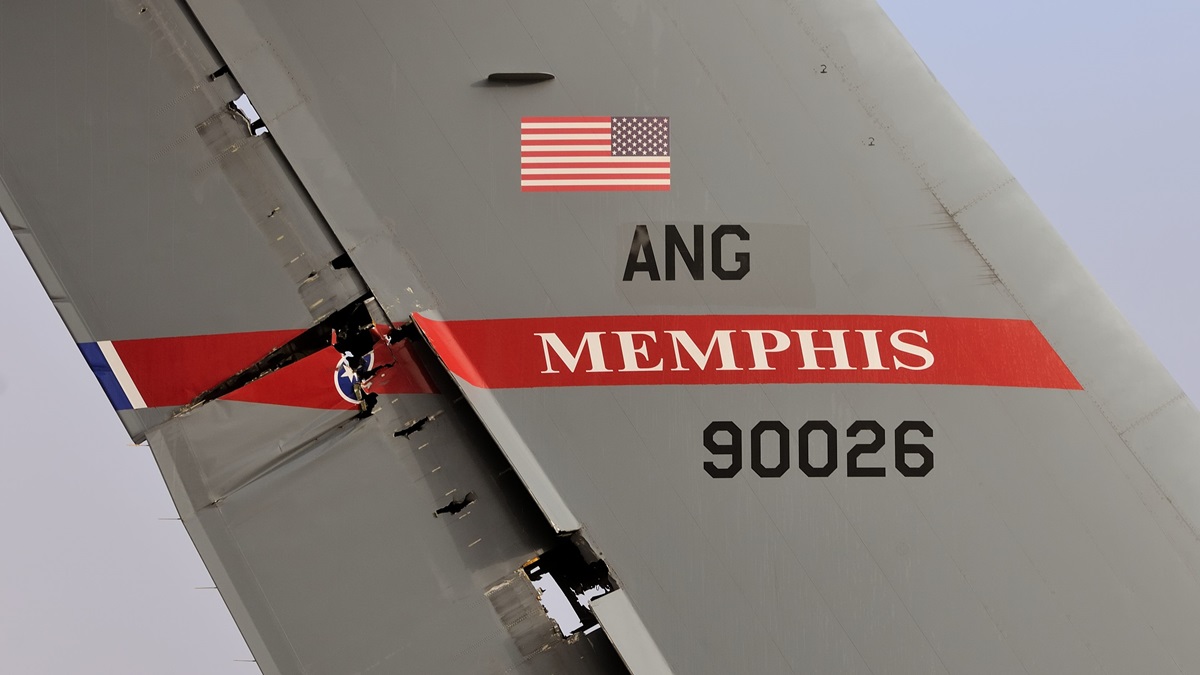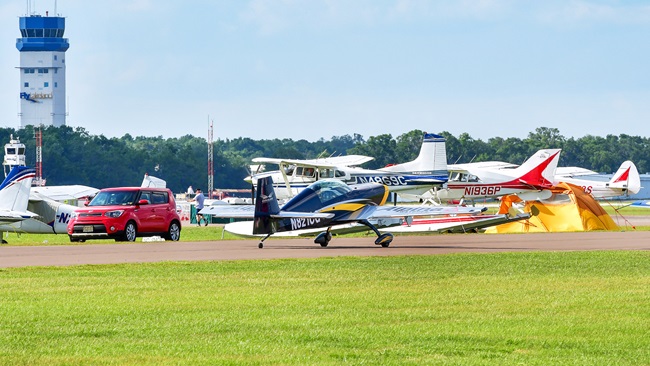A Tale of Two Boneyards
What does the customer want?
Marana Aerospace Solutions, Pinal Airpark, Marana, Arizona
Stored aircraft are maintained per the owner’s request, in either an OEM- or a customer-tailored preservation program. Capacity is about 400 airplanes, depending on the mix of wide- and narrowbody jets. Some aircraft are brand-new, with their entry into service delayed. When an airframe reaches the end of its service life, Marana’s FAR Part 145 repair station can tag and record serviceable components, and coordinate scrapping and disposal.
After World War II, Pinal County took over Marana Army Air Field, which leased it to various tenants during the Vietnam War, including Air America. Operated most recently as Evergreen Aviation, Marana Aerospace Solutions took over in May 2011.
“We have invested substantial dollars and resources to making this into a facility it’s never been before,” said Jim Martin, president and CEO, citing the addition of heavy maintenance capabilities. “That has been an afterthought out here for many years,” Martin said. “We’re exploring general aviation as a possible expansion.”
Davis-Monthan Air Force Base, Tucson, Arizona
There’s only one place for unneeded military aircraft to go: Davis-Monthan Air Force Base in Tucson, where the U.S. Air Force’s 309th Aerospace Maintenance and Regeneration Group (AMARG) operates a 2,600-acre facility—that’s four square miles—currently home to about 4,000 aircraft that represent some 80 weapon systems. After World War II, C–47 transports and B–29 bombers were stored at the base by the U.S. Army Air Forces. It became the primary storage area for all U.S. military aircraft in 1964.
Aircraft are maintained at one of four levels of storage, determined by the AMARG customer. No parts are removed from Level 1000 aircraft, which may be reactivated on short notice. Level 2000 are retained for parts reclamation; and Level 4000 have been identified as excess to the service’s needs, and parts may be repurposed before disposal. (Level 3000 storage essentially is a flyable hold, but no aircraft currently are stored at this level.) Aircraft are still “owned” by their branch of the military, or government agency—or, in some cases, an organization like the National Museum of the U.S. Air Force or the National Museum of Naval Aviation.
A primary reason for AMARG is support; a critically needed part can be retrieved, packed, and shipped to a unit the same day. A carpentry shop builds custom shipping crates for the many unusually shaped or -sized parts. During Fiscal Year 2014, the facility reclaimed almost 10,000 parts, with an original value of more than $523 million.AOPA
Email [email protected]
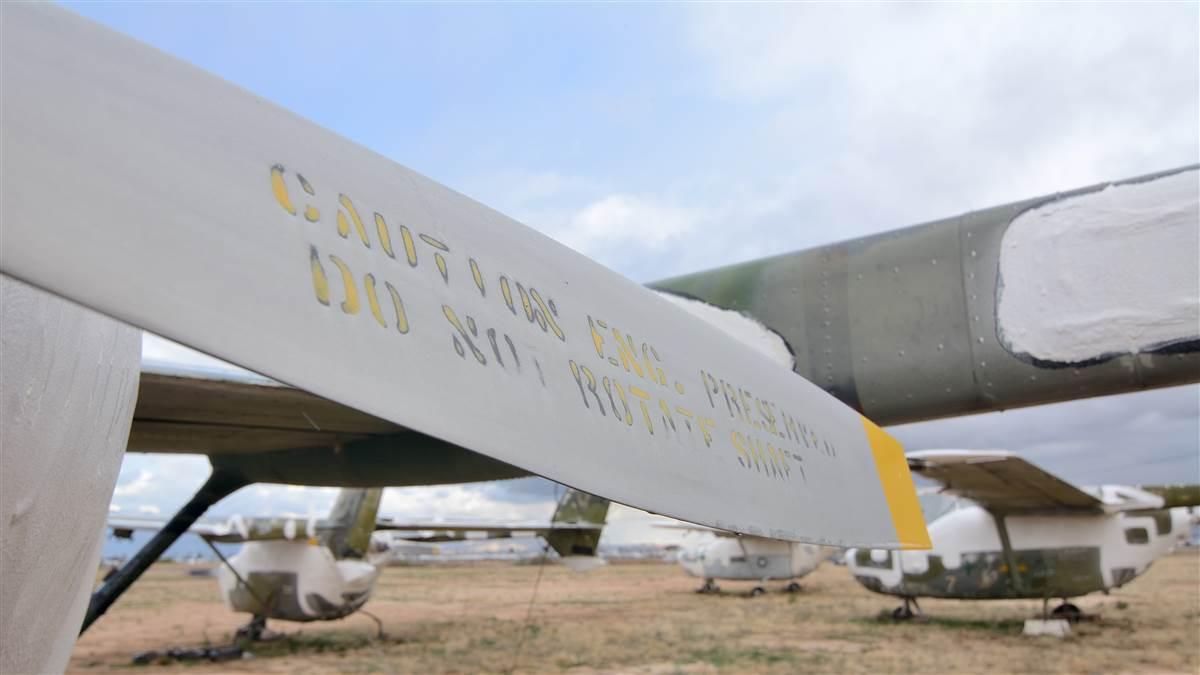
A warning stenciled on the rear propeller of a Vietnam War-era Cessna O–2 advises not to rotate the blade.
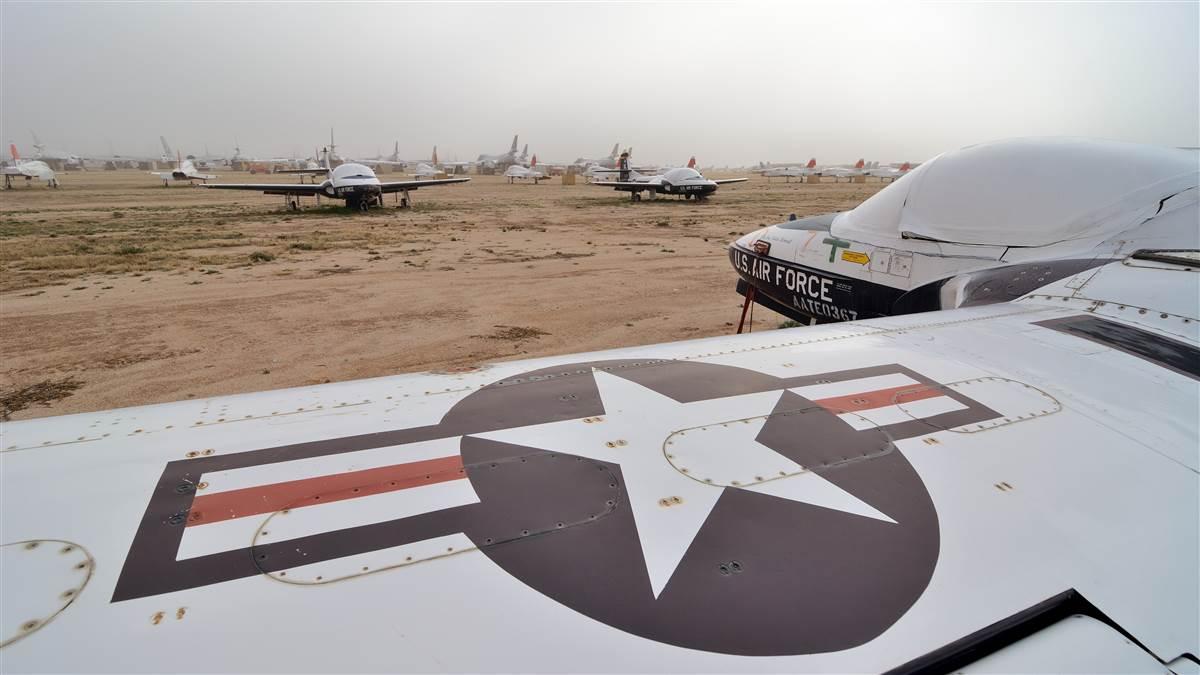
Cessna T–37 training jets await an uncertain future.
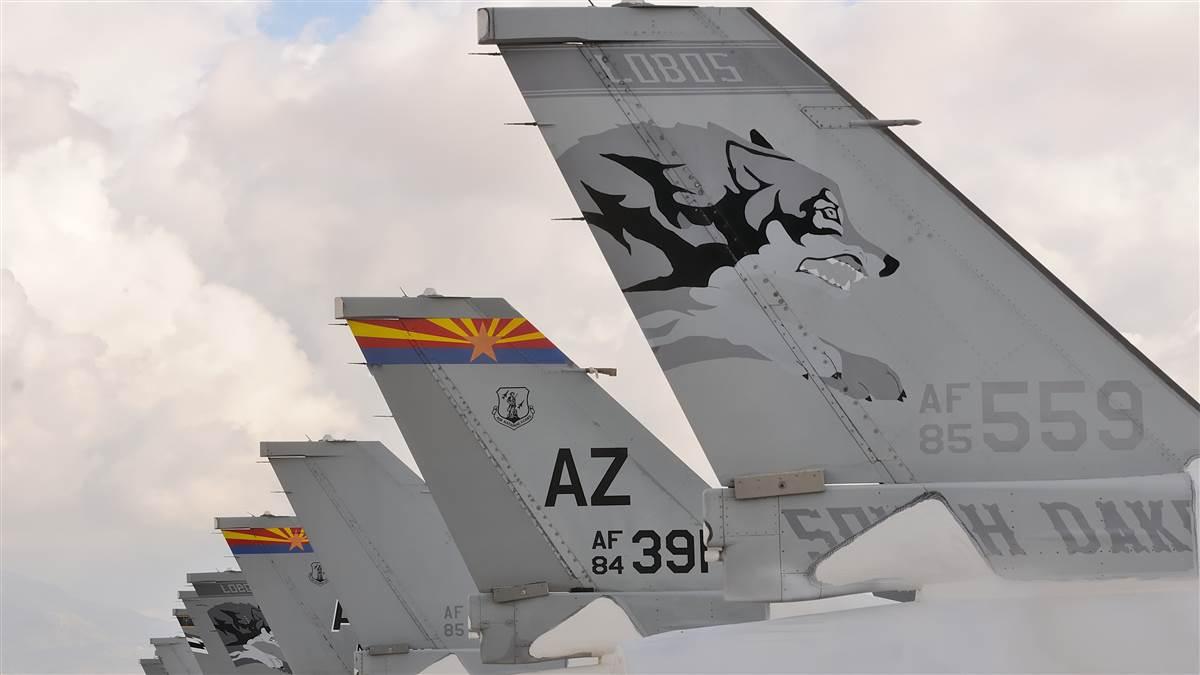
Tails of Galaxy transports.


